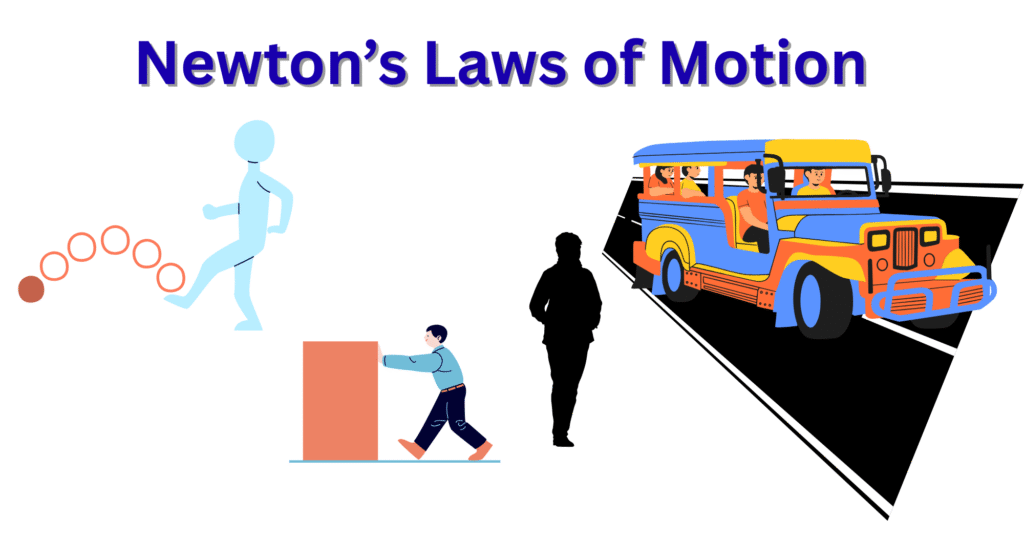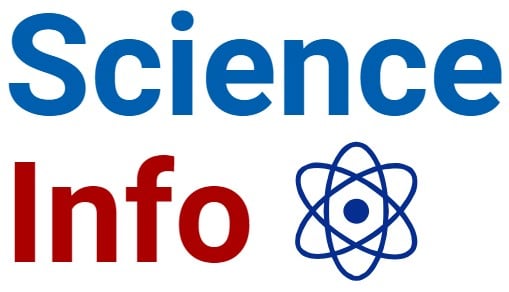Introduction to Newton’s Laws of Motion
Newton’s Laws of Motion are the concepts of Sir Isaac Newton formulated in the 17th century. It consists of three basic laws which describe different forces that act on a body. Thus, the body either in rest or motion reacts to these forces. According to classical mechanics, all the bodies from very small to celestial types are bound by Newton’s laws of motion. Hence, it is a cornerstone for traditional physics.
There are three laws of motion given by Newton which are simple in statement but very powerful, governing the mechanism of the universe. Newton’s first law defines force acting on a body. Newton’s second law develops a mathematical relation between force, mass and acceleration while the third law describes the nature of force.

Newton’s First Law: The Law of Inertia
Newton’s First Law of Motion states that an object will remain in its rest position and an object moving along a straight line will continue to be in motion, unless both are acted upon by a net external force
Inertia is such a property of an object which describes the resisting activity of a body to the change in its state of motion or rest. It also explains that a body cannot suddenly change its state. For example we experience inertia of motion when we are travelling in a bus and it suddenly stops. Likewise, when the bus at rest suddenly starts, we experience the inertia of rest.
Newton’s Second Law: Force and Acceleration Relationship
Newton’s second law is a mathematical tool which relates the force acting on an object to its mass and the rate of change of the velocity. We can write,
F = ma
Here, F is the net force under which the object acts, m is the mass of that object and a represents the acceleration produced.
This law strongly implies that the external force changes the velocity of an object. It also shows the relation of mass with the force and clarifies that greater force is required to accelerate an object with larger mass. For example, pulling a half-filled bucket of water is easier than the full bucket. The half-filled bucket gets more accelerated than the full-filled bucket, with the same amount of force applied.
In the dynamics of motion (either linear or circular), this law is very important to understand the physics under a certain external force. In various fields like aerospace, automotive engineering, and biomechanics Newton’s second law is widely applied.
Newton’s Third Law: Action and Reaction Principle
It is stated as, “For every action, there is an equal and opposite reaction.”
To explain this law we need two bodies which interact with each other. During the collision of two bodies, one will act on the other body and the other respond to the body that acts on it. This process clearly shows action and reaction force.
For example, when we hit an object, we perform the action with certain force. In reaction the object also releases a certain force due to which we fill an impulse. A rocket is also propelled in accordance with the law. Newton’s third law describes well the collisions of objects (Elastic and inelastic collisions) as well as the fluid dynamics.
Applications of Newton’s Laws in Everyday Life
Newton’s Laws of Motion are not hypothetical but these physical laws are experienced in our everyday life from walking or performing household chores. While driving a car or propelling a rocket we can see these laws acting. Some of the applications of these laws are listed below:
- Walking: Walking is possible due to the backward force applied on the ground. As a result, the ground applies an opposing force on the foot due to friction which makes us able to walk.
- In Sports: A footballer hits the ball at rest and brings it in motion. Similarly his opponent tries to change the state of the ball.
- Driving a Car: The wheels of a car apply backward force along the road, as a result the road applies a forward force to the car.
- Circular motion: Any object in a circular motion applies laws of motion to overcome friction and to get centripetal force to keep in motion.
- Rocket Propulsion: The engines apply force on the rocket. As a result, the rocket is propelled according to the acceleration produced by the rocket as per its mass.
- Engineering and Constructions: Vehicles and certain machines are designed on pre-determining the required speed and acceleration, using the second law of motion.
These laws can be studied well to avoid any kinds of injuries during the motion of a body. Banked roads are those examples which are applied for the safe turn of vehicles in a circular road.
Historical Context: Newton’s Principia Mathematica
The laws of motion were first studied by Aristotle. However, the motion and forces were not clearly introduced. The reason for the motion was given as the air surrounding it. In 1638, Galileo Galilei wrote a book describing the natural motion of a body. He concluded that the natural motion continues unless it is disturbed by some external features. Thus, the concept of inertia was introduced by him. But, it had a failure while explaining the motion in a circular path or a projectile motion. By then, Kepler had already given his laws on planetary motion and Descartes had introduced the concept of motion in vacuum.
Studying all these disparities about motion, Sir Isaac Newton published a greatest remark on physics known as Philosophiæ Naturalis Principia Mathematica in 1867. He put all the concepts and mathematics of motions in one framework and gave the three laws of motions. He also presented the law of gravitation in his book, which paved roads for classical mechanics. Newtonian physics also concludes that distant objects can also have an impact on each other without the need of interaction. However, the impact could be negligible. The Principia was a great achievement of the 16th and 17th century that evolved mechanics of motion. .
After the evolution of quantum mechanics in the 20th century and the birth of general theory of relativity, Newtonian mechanics was dragged into some conflicts as it could not deal with the relativistic masses and speeds. Although, it is significant for smaller masses and speeds and is a major subject for a physics and engineering student.
Common Misconceptions About Newton’s Laws
Newton’s law is being taught from basic levels in every school. However, students and even an instructor get confused while applying this law.
- A common thinking is that an object always requires a force to keep moving. However, it should be understood that in the absence of friction or resistance, no force can generate a motion.
- Aristotle had concluded that heavier objects would fall faster. It was objected by Galileo and finally agreed by Newton’s Second Law which states that acceleration depends on net force and mass.
- It is often misunderstood that action and reaction forces cancel each other. Since they act on different objects, they don’t cancel out but create some motion on the object.
- Inertia is often taken as force. However, inertia is a property and not a force.
These misconceptions must be clarified well to better grasp physics.
Newton’s Laws in Modern Physics
Classical mechanics is totally excluded by modern physics and is based on new concepts. Let’s see how modern physics takes classical mechanics.
- Relativity: Einstein’s theory of relativity showed that Newton’s laws are not valid at very high speeds close to the speed of light. Thus, it is inapplicable in the relativistic case. Still, it is dominantly applied for lower mass and speeds.
- Quantum Mechanics: Quantum mechanics is based on probability that goes through the sub-atomic level while Newton’s laws are deterministic and can predict the future state.
- Non-inertial reference frames: Newton’s laws are strictly applied in the inertial frame of reference. Whereas, in accelerating or non-inertial frames, fictitious forces must be introduced.
- Advanced engineering: Technologies like GPS systems apply corrections to both Newtonian and relativistic mechanics.
Experiments Demonstrating Newton’s Laws
The various experiments demonstrating Newton’s Laws are illustrated below:
- First Law (Inertia): To determine the first law, put a handkerchief under a bottle (a cup or a glass). Pull the handkerchief quickly. The bottle remains as it is. First law can be observed here.
- Second Law (F = ma): Bring a cart and keep changing weights on it. The change in acceleration occurs and can be noted while varying weights.
- Third Law (Action-Reaction): Blow a balloon and release it. The balloon moves upward, opposite to the releasing air and a third law can be observed.
These experiments can be easily performed in classrooms, making the laws easy to catch up.
Conclusion
Newton’s Laws of Motion are the most important scientific discoveries in history. They provide full support to gain knowledge on the physics of nature. These principles have strong theoretical, mathematical and experimental bases, explaining everything from the movement of the celestial bodies to daily circumstances like walking.
Although modern physics denies Newton’s laws, his laws cannot be underestimated in the real world. Various simple to complex applications rely on Newton’s laws. Understanding them not only improves knowledge about science, but it also improves our ability to deal with everyday life. Newton’s laws may be traditional, but its renowned applications will keep passing from generation to generation. (Also read about Kepler’s laws)
References
Tait, P. G. (1899). Newton’s laws of motion. A. & C. Black.
Mahajan, S. (2020). A Student’s Guide to Newton’s Laws of Motion. Cambridge University Press.
Newton, I. (2017). Laws of Motion. Law of Gravitation.
Zimba, J. (2009). Force and motion: an illustrated guide to Newton’s laws. JHU Press.
Goren, E., & Galili, I. (2019, August). Newton’s Law-A Theory of motion or force?. In Journal of Physics: Conference Series (Vol. 1287, No. 1, p. 012061). IOP Publishing.
https://www.thoughtco.com/what-are-newtons-laws-of-motion-608324
https://www.britannica.com/science/Newtons-laws-of-motion
https://www.geeksforgeeks.org/physics/newtons-laws-of-motion/

I love it, good explanation